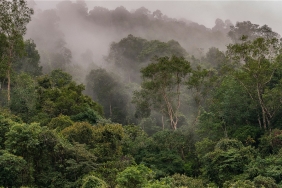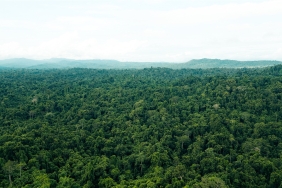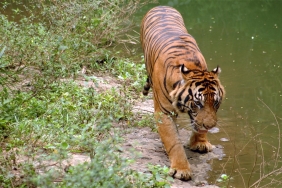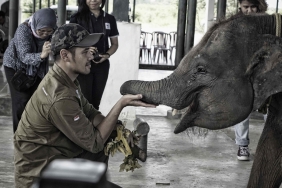RELEASING A LITTLE FRIEND BACK TO HER HOME
By: Blandina Isabella Patty (ESD Officer WWF-Indonesia Progam Papua)
Sawendui Village in Raimbawi District is a village located on the northern coast of the Yapen Islands. This village with a coastal area of 35,000 m2 has natural potential with extraordinary biodiversity. The close friendship between nature and humans is felt in this village. Ecosystems and species in the forest and the sea do not feel threatened because no human hand tries to damage or hurt them.
The coast of Sawendui Village is one of the favorite stopover locations for various types of sea turtles, such as leatherback turtles, hawksbill turtles, and Olive Ridley turtles or often called gray turtles. The turtles land on the beach at certain times only to lay their eggs. After laying eggs, they return to their habitat. According to the local community, turtle landing sites are not only in Sawendui Village, but along the north coast of the Yapen Islands, including Barawai Village and other villages. However, based on calculations, the number of turtles landing in Sawendui Village is more than the number of turtles landing in other villages.
Apparently, children in this village already have the awareness to protect and manage their environment even though there is no school as an educational facility in this village. Starting from the habit of often following their parents to the forest or to the beach to monitor turtle breeding sites, these children are motivated to help their parents protect and manage the existing natural potential.
Seeing this, Mr. Absalom Kurano as the head of Sawendui Village provides lessons which are new duties and responsibilities for children in Sawendui Village. These lessons are rarely obtained by children in cities and other villages, namely learning to release hatchlings back to their habitat. "This is a new responsibility that I give to the children in the village," explained Mr. Absalom. According to Mr. Absalom, it is not enough for children to only see their parents' activities. Even though they are still children, they must also be involved in managing the natural potential they have.
The first task was carried out last Wednesday (01/06). A beautiful view was seen on the beach of Sawendui Village. Sunny weather in the morning decorated with white clouds in the sky that seemed to smile at the children of Sawendui Village, accompanied the children's new task. There were about 10 children aged 5-8 years who took part. The proud faces of what they did were clearly visible. Each child listened to the directions given by the village head. A 2-meter line on the shoreline was drawn by Mr. Absalom as the starting line for the release of the hatchlings by the children. The hatchlings released back into the sea are those that have been out of the eggshell for about 3-4 days. Usually, hatchlings that have only been hatched for 1 day are not immediately released to their habitat because their physical condition is still very weak. Newly hatched hatchlings are also not yet able to move their bodies fully, making them vulnerable if they are released immediately. They must still be quarantined in captivity for a few days. After that, the hatchlings will be released back to their "home".
The children on first duty took their positions and lined up neatly behind the starting line. They prepared to release the hatchlings while listening to the directions and signals from Mr. Absalom. When lining up behind the starting line, their faces looked more serious, as if they were getting ready for a hatchling race. The signal was given by Mr. Absalom to release the first batch of hatchlings. At the count of 3, the tiny hatchlings began to be released slowly onto the beach towards the sea. After the first batch was finished, the next batch continued until the end. The tiny hatchlings that were released walked slowly towards the shoreline and were greeted by small waves that also picked them up back to their habitat.
A look of satisfaction for having completed a task with a noble mission adorns the faces of the children in Sawendui Village. Mr. Absalom was also proud and satisfied with his efforts to provide environmental lessons to the children in the village. "This is not the first and last time. I will give this task regularly to the children," said Mr. Absalom. "Hopefully, by giving this responsibility to the children in Sawendui Village, they will have a sense of ownership of their own nature and a sense of responsibility to protect, maintain and manage what they have," hoped Mr. Absalom.





